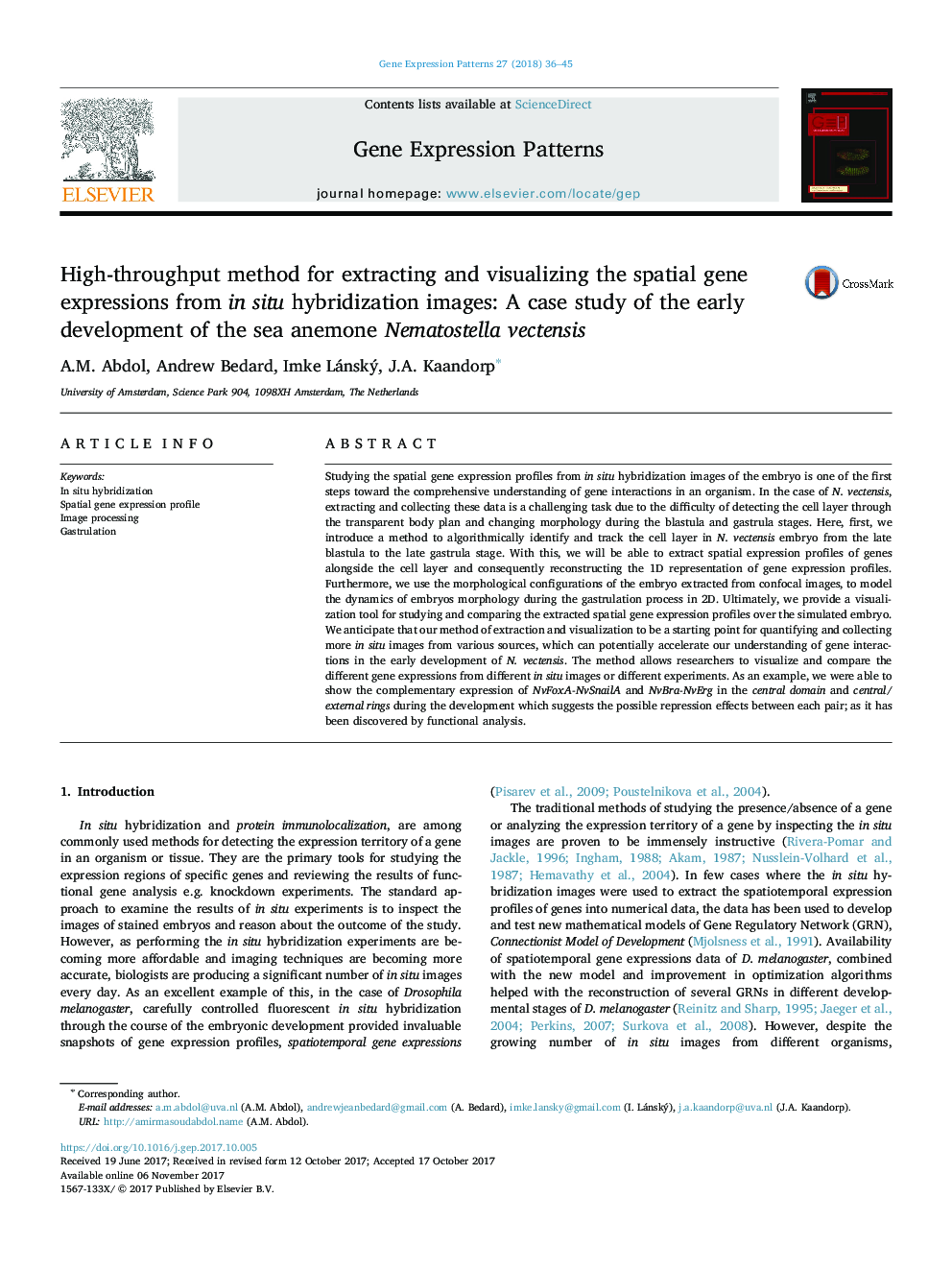| Article ID | Journal | Published Year | Pages | File Type |
|---|---|---|---|---|
| 8471043 | Gene Expression Patterns | 2018 | 10 Pages |
Abstract
Studying the spatial gene expression profiles from in situ hybridization images of the embryo is one of the first steps toward the comprehensive understanding of gene interactions in an organism. In the case of N. vectensis, extracting and collecting these data is a challenging task due to the difficulty of detecting the cell layer through the transparent body plan and changing morphology during the blastula and gastrula stages. Here, first, we introduce a method to algorithmically identify and track the cell layer in N. vectensis embryo from the late blastula to the late gastrula stage. With this, we will be able to extract spatial expression profiles of genes alongside the cell layer and consequently reconstructing the 1D representation of gene expression profiles. Furthermore, we use the morphological configurations of the embryo extracted from confocal images, to model the dynamics of embryos morphology during the gastrulation process in 2D. Ultimately, we provide a visualization tool for studying and comparing the extracted spatial gene expression profiles over the simulated embryo. We anticipate that our method of extraction and visualization to be a starting point for quantifying and collecting more in situ images from various sources, which can potentially accelerate our understanding of gene interactions in the early development of N. vectensis. The method allows researchers to visualize and compare the different gene expressions from different in situ images or different experiments. As an example, we were able to show the complementary expression of NvFoxA-NvSnailA and NvBra-NvErg in the central domain and central/external rings during the development which suggests the possible repression effects between each pair; as it has been discovered by functional analysis.
Related Topics
Life Sciences
Biochemistry, Genetics and Molecular Biology
Cell Biology
Authors
A.M. Abdol, Andrew Bedard, Imke Lánský, J.A. Kaandorp,
